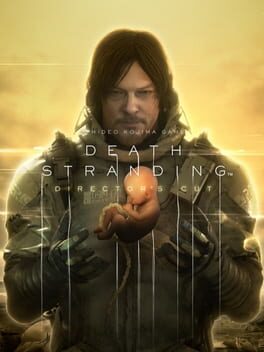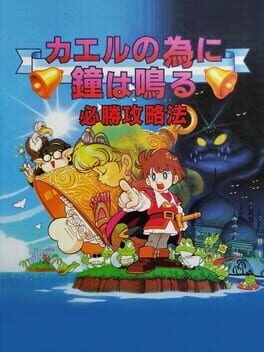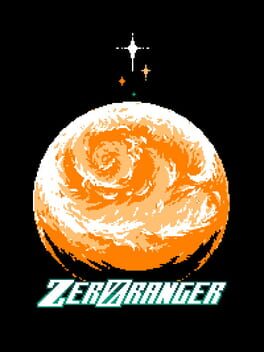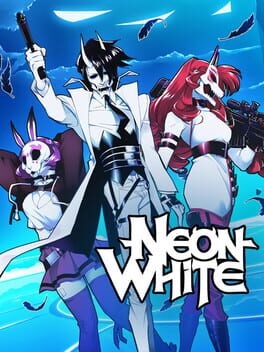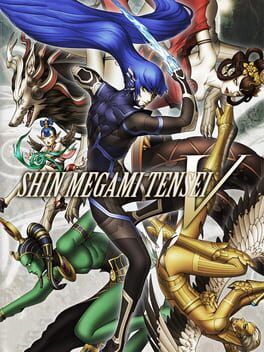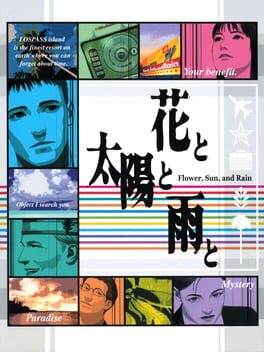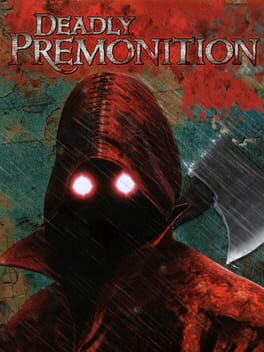sleepy_nice
10 reviews liked by sleepy_nice
Dark Souls
2011
This is the first one of these I've actually fully completed a low-SL run on, although I've done most of one on both Sekiro and Elden Ring. I loved those runs for how much they forced me as a player to reckon with the beating heart of the bosses and learn all their secrets. The Dark Souls 1 SL1 is... not really the same way. Even without making use of the massive damage pyromancy brings to the table, I was shocked how easy I was able to damage bosses and survive hits even through the late game. I won't say it was disappointing, exactly, but it wasn't revelatory in the way that other similar runs I've done were.
That said, there are a few bosses that I feel like I understand a bit better this time around:
• Demon (Asylum, Stray, Firesage): I just love these guys. A classic for a reason. Never hard but never trivial, always a satisfying fight. They chose to bring these back constantly game after game and they were right to do so.
• Bell Gargoyle: The more I play this fight the more I like it. It teaches you so much so quickly about how to manage health bars, staggers, and spacing. It takes more strategy than luck, and it's so satisfying once you nail it.
• Ornstein & Smough: My hottest take about DS1 is that I don't like this fight that much. I think it's interesting as the first draft of a full-on duo fight, and it's undeniably effective as a wall that is ultimately surmountable, but I think they handled this core concept much better in other games. There are so many small ways in which this fight looks like the player should be able to push at it that just don't work for annoying and opaque reasons. I think it serves its place in this game well, but coming to it as one of my later FromSofts I'm not terribly impressed.
• Four Kings: This was the hardest base-game fight for me in SL1 by a pretty substantial margin. I actually came away liking it a fair amount... my main complaint is that the orbiting projectile attack shouldn't just persist forever if it doesn't hit you. What on earth is up with that?
• Sanctuary Guardian: This is the boss that improved most in my estimation in SL1, I think. It's such a glass cannon that I've always crumpled it more or less immediately in my real runs, but in SL1 my damage output was low enough and my body fragile enough that I had to really think about it. It's pretty cool! A solid and fast-paced beast fight that definitely presages Bloodborne.
• Manus: This was the hardest boss for me overall, with six hours of total attempts, but I loved every minute that wasn't spent on runbacks. I came so close to a hitless victory because I really had to meticulously understand and think through every attack he could do and how to answer it, and that's exactly what I'm looking for from a run like this.
• Kalameet: I did also have to learn Kalameet pretty deeply, but I came away with a much worse impression of it overall. I feel pretty similarly here as I do about O&S: it's a really cool historical artifact as their first draft of a proper dragon fight, but it's overshadowed by all those fights after it. The hitboxes are janky, there's no reward for hitting the head, and even once I got the hang of it it felt like a third of my failures were something weird happening rather than my own fault.
That said, there are a few bosses that I feel like I understand a bit better this time around:
• Demon (Asylum, Stray, Firesage): I just love these guys. A classic for a reason. Never hard but never trivial, always a satisfying fight. They chose to bring these back constantly game after game and they were right to do so.
• Bell Gargoyle: The more I play this fight the more I like it. It teaches you so much so quickly about how to manage health bars, staggers, and spacing. It takes more strategy than luck, and it's so satisfying once you nail it.
• Ornstein & Smough: My hottest take about DS1 is that I don't like this fight that much. I think it's interesting as the first draft of a full-on duo fight, and it's undeniably effective as a wall that is ultimately surmountable, but I think they handled this core concept much better in other games. There are so many small ways in which this fight looks like the player should be able to push at it that just don't work for annoying and opaque reasons. I think it serves its place in this game well, but coming to it as one of my later FromSofts I'm not terribly impressed.
• Four Kings: This was the hardest base-game fight for me in SL1 by a pretty substantial margin. I actually came away liking it a fair amount... my main complaint is that the orbiting projectile attack shouldn't just persist forever if it doesn't hit you. What on earth is up with that?
• Sanctuary Guardian: This is the boss that improved most in my estimation in SL1, I think. It's such a glass cannon that I've always crumpled it more or less immediately in my real runs, but in SL1 my damage output was low enough and my body fragile enough that I had to really think about it. It's pretty cool! A solid and fast-paced beast fight that definitely presages Bloodborne.
• Manus: This was the hardest boss for me overall, with six hours of total attempts, but I loved every minute that wasn't spent on runbacks. I came so close to a hitless victory because I really had to meticulously understand and think through every attack he could do and how to answer it, and that's exactly what I'm looking for from a run like this.
• Kalameet: I did also have to learn Kalameet pretty deeply, but I came away with a much worse impression of it overall. I feel pretty similarly here as I do about O&S: it's a really cool historical artifact as their first draft of a proper dragon fight, but it's overshadowed by all those fights after it. The hitboxes are janky, there's no reward for hitting the head, and even once I got the hang of it it felt like a third of my failures were something weird happening rather than my own fault.
The plot was the thing I was first sold on in Fires of Rubicon. Although it feels more than a little Dune-esque in the initial outline (factions squabbling over a planet that is the unique source of a precious resource, reportedly even called "melange" at some point in development) the game quickly makes clear that it's not interested in telling a cookie-cutter story. Even when I was struggling mightily with the combat, I was fascinated by the factional intricacies and the way they were portrayed in the game's mission structure.
Once I started my second loop (the game asks for three playthroughs to see all the missions and get the final "true" ending), I was even more impressed: when I or other characters made slightly different decisions, I could see how they ramify throughout the course of the game's plot. As I gain familiarity with the characters, I learned to recognize them earlier and found no small amount of affection for their quirks and foibles.
And as I pushed myself forward, I found myself beginning to really appreciate the combat as well. This didn't happen all at once: I spent pretty much the entire first loop frustrated with the game and with myself for failing to learn its language. I felt like I wasn't making a dent in bosses even when I played around with different builds and strategies, and that I couldn't make progress until I went online and copied specialized bosskiller loadouts from people on Reddit and Discord.
But eventually, reading these online resources and chatting with my friend Molly who was several steps ahead of me in the game, I realized something: From Software has always made their game bearing not just its own mechanics in mind, but the way its players will engage with it and each other. They are heavily influenced by classics like The Tower of Druaga, laden with ideas and secrets that can only be found and shared by an entire arcade's worth of players working together. I had thought of myself as failing by looking at these online resources, but From is well aware that they're releasing the game in an age of wikis and group chats. I was doing just what I was supposed to.
I still think there are some tweaks that could be made to make more different builds more viable against more bosses, but once I got over my own fear of learning the game the "wrong way", it suddenly clicked for me. With Molly's help and a deeper online understanding of the mechanics, I started blazing through challenges in the second loop that had stopped me dead in loop 1. The first loop took me over a week; the second loop took five days; the third took only a day and a half.
And by the time I got to the end, ooooo does the game feel nice to play. Especially against a boss I know well, dodging and weaving and building stagger and perfectly rationing my heavy hitters to punish it really does feel like I'm one with my mech. And it's hard to ask for much more from an Armored Core.
Once I started my second loop (the game asks for three playthroughs to see all the missions and get the final "true" ending), I was even more impressed: when I or other characters made slightly different decisions, I could see how they ramify throughout the course of the game's plot. As I gain familiarity with the characters, I learned to recognize them earlier and found no small amount of affection for their quirks and foibles.
And as I pushed myself forward, I found myself beginning to really appreciate the combat as well. This didn't happen all at once: I spent pretty much the entire first loop frustrated with the game and with myself for failing to learn its language. I felt like I wasn't making a dent in bosses even when I played around with different builds and strategies, and that I couldn't make progress until I went online and copied specialized bosskiller loadouts from people on Reddit and Discord.
But eventually, reading these online resources and chatting with my friend Molly who was several steps ahead of me in the game, I realized something: From Software has always made their game bearing not just its own mechanics in mind, but the way its players will engage with it and each other. They are heavily influenced by classics like The Tower of Druaga, laden with ideas and secrets that can only be found and shared by an entire arcade's worth of players working together. I had thought of myself as failing by looking at these online resources, but From is well aware that they're releasing the game in an age of wikis and group chats. I was doing just what I was supposed to.
I still think there are some tweaks that could be made to make more different builds more viable against more bosses, but once I got over my own fear of learning the game the "wrong way", it suddenly clicked for me. With Molly's help and a deeper online understanding of the mechanics, I started blazing through challenges in the second loop that had stopped me dead in loop 1. The first loop took me over a week; the second loop took five days; the third took only a day and a half.
And by the time I got to the end, ooooo does the game feel nice to play. Especially against a boss I know well, dodging and weaving and building stagger and perfectly rationing my heavy hitters to punish it really does feel like I'm one with my mech. And it's hard to ask for much more from an Armored Core.
Pseudoregalia
2023
"If it feels like you're suffering, you're probably missing a movement item," my friend Aura tells me as I throw myself against a nearly-impossible platforming section. "Oh, I know," I reply, "but what if I can do it anyway?" And, dear reader, I could.
If you play Pseduoregalia and unlock every movement mechanic in the expected order and solve every puzzle using the intended solution, you are experiencing a fundamentally different game than I. To me, this is a game of getting away with something, piecing together the tools you have on hand to sneak through challenges designed for different tools and steal rewards meant for another you in another time. The movement is so deep and so powerful once you push it to its limits that you can go almost anywhere with only a few mechanics.
This makes me wonder: why are there so few 3D games that really focus in on the technical complexity of motion in 3D space? Where is the evolutionary branch of 3D platformers that zoomed in on the platforming instead of the world around it? Did I miss them, or does Pseudoregalia really stand alone?
One thing's for sure: this is going to have the absolute sickest low% speedruns you've ever seen.
If you play Pseduoregalia and unlock every movement mechanic in the expected order and solve every puzzle using the intended solution, you are experiencing a fundamentally different game than I. To me, this is a game of getting away with something, piecing together the tools you have on hand to sneak through challenges designed for different tools and steal rewards meant for another you in another time. The movement is so deep and so powerful once you push it to its limits that you can go almost anywhere with only a few mechanics.
This makes me wonder: why are there so few 3D games that really focus in on the technical complexity of motion in 3D space? Where is the evolutionary branch of 3D platformers that zoomed in on the platforming instead of the world around it? Did I miss them, or does Pseudoregalia really stand alone?
One thing's for sure: this is going to have the absolute sickest low% speedruns you've ever seen.
Although I loved Death Stranding when I played it through on release, I didn't really consider it a contender for my game of the year in The Year of Endless Bangers. I let three years slip by, not even booting it back up on the release of the Director's Cut, before ultimately using my new PS5 as an excuse to transfer the save and bang out a few more deliveries.
So much has changed for me in the intervening three years. Others have written at length about the pandemic and its thematic parallels with the game, so suffice it to say that for me (still largely housebound and isolated, increasingly alienated by the fever-pitch denial of the world at large) being able to enact a world where real people work together to build infrastructure and thereby heal the world has been personally healing in a way I couldn't have imagined in 2019.
My tastes as someone who thinks critically about games have changed as well. Death Stranding's preoccupation with the texture of play—from asking you to viscerally feel the geometry of the ground you walk on to showing painstakingly mocapped cutscenes of every little action in your private room—hits much harder now that I've played through the FromSoft canon which is itself texture-obsessed in a different direction. Coming directly off playing some AAA shlock, I also found myself with a renewed appreciation of this game's dialectic approach to a cinematic aesthetic, with carefully choreographed moments that nevertheless always emphasize play as the distinguishing factor that makes this decidedly not a movie.
I'm setting this down again not because I'm finished with it for good, but because I'm inducting it into the tier of games I intend to return to over and over again. I could happily finish out the DC plots and call it "finished", but what I really want is to create a kind of personal infrastructure I can use to bring myself back to this world, this textural landscape, whenever I need to feel that connection with people that this game so masterfully evokes.
So much has changed for me in the intervening three years. Others have written at length about the pandemic and its thematic parallels with the game, so suffice it to say that for me (still largely housebound and isolated, increasingly alienated by the fever-pitch denial of the world at large) being able to enact a world where real people work together to build infrastructure and thereby heal the world has been personally healing in a way I couldn't have imagined in 2019.
My tastes as someone who thinks critically about games have changed as well. Death Stranding's preoccupation with the texture of play—from asking you to viscerally feel the geometry of the ground you walk on to showing painstakingly mocapped cutscenes of every little action in your private room—hits much harder now that I've played through the FromSoft canon which is itself texture-obsessed in a different direction. Coming directly off playing some AAA shlock, I also found myself with a renewed appreciation of this game's dialectic approach to a cinematic aesthetic, with carefully choreographed moments that nevertheless always emphasize play as the distinguishing factor that makes this decidedly not a movie.
I'm setting this down again not because I'm finished with it for good, but because I'm inducting it into the tier of games I intend to return to over and over again. I could happily finish out the DC plots and call it "finished", but what I really want is to create a kind of personal infrastructure I can use to bring myself back to this world, this textural landscape, whenever I need to feel that connection with people that this game so masterfully evokes.
This game absolutely luxuriates in its existence as a video game. You can practically see the designers standing around a whiteboard jotting down ideas for how to use the quirks and foibles of this little adventure game engine to tell as many stories and make as many jokes as possible. The combat system is purely deterministic which might be annoying in a lesser game, but here is used to great effect both cinematically and from a design perspective—grinding is replaces by moving through the game's many subplots and exploring its areas while still capturing the joy of numbers going up.
And what better platform for a game that wants to show off its materiality than the original Game Boy? Such a tremendously underpowered little thing, barely able to hold a game together, but Kaeru no Tame manages to flip that into a strength. Every new interaction and mechanic feels like a magic trick: the game pulls a zip line out from behind your ear in the final act with a flourish, and it startles and amazes precisely because you can tell that it's at the limits of what the system can accomplish.
They don't make 'em like this anymore, and I'm not sure they even can—at least not from a major video game studio. Now it's up to hobbyists and indies to keep these platforms alive and spin their restrictions into gold.
And what better platform for a game that wants to show off its materiality than the original Game Boy? Such a tremendously underpowered little thing, barely able to hold a game together, but Kaeru no Tame manages to flip that into a strength. Every new interaction and mechanic feels like a magic trick: the game pulls a zip line out from behind your ear in the final act with a flourish, and it startles and amazes precisely because you can tell that it's at the limits of what the system can accomplish.
They don't make 'em like this anymore, and I'm not sure they even can—at least not from a major video game studio. Now it's up to hobbyists and indies to keep these platforms alive and spin their restrictions into gold.
Sonic Frontiers
2022
Shockingly brilliant and relentlessly at war with itself, you could probably create the perfect Sonic game by taking a list of every design decision Frontiers makes and doing the exact same thing or the exact opposite. It is a game defined by its contradictions. It is a game about going fast; jumping loses all your momentum. It's the first Sonic game whose levels I've enjoyed enough to try optimizing; its challenge times are a joke and it has no way to compare times with others or yourself. It asks you to track a complex web of set pieces through the sky; it has pop-in so bad that most of those set pieces are totally invisible unless you're practically on top of them.
Among a sea of open world games, Sonic Frontiers is one of precious few to deeply innovate on the form. It stridently makes the case that the act of movement through the world can be intrinsic to play rather than a chore to accomplish once and then hide behind fast travel forever after. And once it's given the player just enough time to internalize that lesson, it undercuts itself completely by adding a totally unnecessary fast travel system.
The cyberspace levels (classic self-contained Sonic level design) are layered and engaging—but only if you know how to use the undocumented Magnet Dash technique, wherein you cancel a homing attack into a massive air dash. This trick hits the perfect balance of being doable even by a non-speedrunner like me, totally recontextualizing level designs, and being conditional enough to keep the structure of the level relevant. But while some levels feel like they were designed with it in mind, others will trap you in inaccessible level geometry or totally wreck your camera.
Here's the thing, though: whatever else it may be, Sonic Frontiers is interesting. Some of its choices may be agonizingly conservative or blatantly stupid, true, but many are bold and an impressive number of those end up panning out. It's a AAA game that's messy and outré and occasionally fabulously daring at a time when AAA has come increasingly to mean intense polish and rigid uniformity. That alone is worth celebrating.
Among a sea of open world games, Sonic Frontiers is one of precious few to deeply innovate on the form. It stridently makes the case that the act of movement through the world can be intrinsic to play rather than a chore to accomplish once and then hide behind fast travel forever after. And once it's given the player just enough time to internalize that lesson, it undercuts itself completely by adding a totally unnecessary fast travel system.
The cyberspace levels (classic self-contained Sonic level design) are layered and engaging—but only if you know how to use the undocumented Magnet Dash technique, wherein you cancel a homing attack into a massive air dash. This trick hits the perfect balance of being doable even by a non-speedrunner like me, totally recontextualizing level designs, and being conditional enough to keep the structure of the level relevant. But while some levels feel like they were designed with it in mind, others will trap you in inaccessible level geometry or totally wreck your camera.
Here's the thing, though: whatever else it may be, Sonic Frontiers is interesting. Some of its choices may be agonizingly conservative or blatantly stupid, true, but many are bold and an impressive number of those end up panning out. It's a AAA game that's messy and outré and occasionally fabulously daring at a time when AAA has come increasingly to mean intense polish and rigid uniformity. That alone is worth celebrating.
ZeroRanger
2018
The push to get others to play ZeroRanger instills in me a certain malaise, specifically because it comes with the caveat of 'avoiding spoilers.' That insistence on going in completely blind affects expectations more than those recommending it might know. If you are interested in ZeroRanger, my advice would be to go for it with a few things in mind. I put these forth after the following paragraph to avoid marking the whole review as a spoiler, and to place those light spoilers below the break.
The sentiment that ZeroRanger is one of the best STGs in recent history has rattled around my head since its release. Claims of a work's greatness already make me wary, but for such praise to get tossed around from genre fans and dissenters alike made me all the more apprehensive. An insistence on 'not spoiling' ZeroRanger served as a final nail in the coffin for me in the wake of games like Undertale and OneShot. I was content to ignore ZeroRanger and play conventional STGs like Crimzon Clover and Deathsmiles. Around a year ago when I dove deeper into shmups, ZeroRanger became something I certainly wanted to try if only to see what the hubbub was really about. I played it a bit, couldn't get past Stage 3, and put it down. Credit feeding is a practice I try to avoid despite its use in honing ones skill, and this was no different. What I failed to pick up on by not ever using even a single continue is that ZeroRanger explicitly wanted me to use my continues to my advantage. It went back to the bottom of my shmups to beat list and the still present praise for it befuddled me all the more.
Light Spoilers
1. You need to use your continues. All of them.
2. The game is absurdly long for a shmup. Any time you think you're at the end, you are not.
3. You can use the stage select with no penalty outside of score.
4. Getting hit is fine, the game is incredibly generous with extends, especially if your lives are low.
5. There are some fights that feel impossible. There are tricks to beating them you can find if you experiment a little.
Light Spoilers End
The drive to improve without using continues persisted due to the oppressive difficulty of the game while I found my footing. Quirks of its design were unknown to me because I wasn't getting far enough to see how its systems actually worked. Those 'aha!' moments finally came when I shook things up and tried Type-C's rearshot on Stage 2's miniboss and it melted. From that point I knew I wanted to see this through to the end.
ZeroRanger is awash with hills and valleys in difficulty oscillating constantly and consistently. This leads to periods of rest which are greatly welcomed in a game whose full runs take over an hour to complete. When progressing this meant I was being built up and torn down repeatedly, thinking I had finally become 'good' only to get punished for my hubris. Nonetheless, as the game was never an unceasing climb in its difficulty, my progress did not wear at me like typicaly STGs such as Espgaluda had. The improvements in my play were palpable and my failures pushed me to do better next time. By no means was that experience unique to ZeroRanger, far from it, but it was more apparent here than in any other shmup I had played. It only became grating near the very end of my time when I had seen the start of the end of the game but hadn't realised I could freely use the stage select without remorse.
What I appreciate most about ZeroRanger is that it rendered concrete for me how I can and do improve at shmups (and games in general). By overcoming that inital hurdle of actually using continues and fighting back even harder after getting damaged, it clicked for me that I had been missing something in STGs this entire time by eschewing growth in favour of perfection. There's a pain point in that ZeroRanger's systems are far more forgiving of mistakes than, say, a CAVE STG but the lesson has been learned nonetheless. That desire for a 1CC will never leave me, and I plan on getting on in ZeroRanger, but my path towards that goal should be more constructive from now on.
Purely as a shmup, I think ZeroRanger leaves a little to be desired but I can't quite say why. As a stepping stone towards more healthful practices of playing and approaching games, it's one of the best.
Some errant thoughts:
The palette is the most striking thing about ZeroRanger, but I actually consider it a detriment in some ways. The visual contrast of the Colorblind Mode was much more legible for me and I'm not colourblind. The palettes unlocked after beating the game were infuriatingly helpful. That such beneficial colour schemes are kept from the player until they've finished the game is mindboggling. The Gray/Orange palette could at the very least be offered before beating ZeroRanger.
I'm thankful that the challenges and extras are nonexistent before getting the all clear as I am certain I would have obsessed over them above actually completing the game first.
The singular focus on movement at the end of the game is wondrous but it could have done with some more interesting patterns.
The sentiment that ZeroRanger is one of the best STGs in recent history has rattled around my head since its release. Claims of a work's greatness already make me wary, but for such praise to get tossed around from genre fans and dissenters alike made me all the more apprehensive. An insistence on 'not spoiling' ZeroRanger served as a final nail in the coffin for me in the wake of games like Undertale and OneShot. I was content to ignore ZeroRanger and play conventional STGs like Crimzon Clover and Deathsmiles. Around a year ago when I dove deeper into shmups, ZeroRanger became something I certainly wanted to try if only to see what the hubbub was really about. I played it a bit, couldn't get past Stage 3, and put it down. Credit feeding is a practice I try to avoid despite its use in honing ones skill, and this was no different. What I failed to pick up on by not ever using even a single continue is that ZeroRanger explicitly wanted me to use my continues to my advantage. It went back to the bottom of my shmups to beat list and the still present praise for it befuddled me all the more.
Light Spoilers
1. You need to use your continues. All of them.
2. The game is absurdly long for a shmup. Any time you think you're at the end, you are not.
3. You can use the stage select with no penalty outside of score.
4. Getting hit is fine, the game is incredibly generous with extends, especially if your lives are low.
5. There are some fights that feel impossible. There are tricks to beating them you can find if you experiment a little.
Light Spoilers End
The drive to improve without using continues persisted due to the oppressive difficulty of the game while I found my footing. Quirks of its design were unknown to me because I wasn't getting far enough to see how its systems actually worked. Those 'aha!' moments finally came when I shook things up and tried Type-C's rearshot on Stage 2's miniboss and it melted. From that point I knew I wanted to see this through to the end.
ZeroRanger is awash with hills and valleys in difficulty oscillating constantly and consistently. This leads to periods of rest which are greatly welcomed in a game whose full runs take over an hour to complete. When progressing this meant I was being built up and torn down repeatedly, thinking I had finally become 'good' only to get punished for my hubris. Nonetheless, as the game was never an unceasing climb in its difficulty, my progress did not wear at me like typicaly STGs such as Espgaluda had. The improvements in my play were palpable and my failures pushed me to do better next time. By no means was that experience unique to ZeroRanger, far from it, but it was more apparent here than in any other shmup I had played. It only became grating near the very end of my time when I had seen the start of the end of the game but hadn't realised I could freely use the stage select without remorse.
What I appreciate most about ZeroRanger is that it rendered concrete for me how I can and do improve at shmups (and games in general). By overcoming that inital hurdle of actually using continues and fighting back even harder after getting damaged, it clicked for me that I had been missing something in STGs this entire time by eschewing growth in favour of perfection. There's a pain point in that ZeroRanger's systems are far more forgiving of mistakes than, say, a CAVE STG but the lesson has been learned nonetheless. That desire for a 1CC will never leave me, and I plan on getting on in ZeroRanger, but my path towards that goal should be more constructive from now on.
Purely as a shmup, I think ZeroRanger leaves a little to be desired but I can't quite say why. As a stepping stone towards more healthful practices of playing and approaching games, it's one of the best.
Some errant thoughts:
The palette is the most striking thing about ZeroRanger, but I actually consider it a detriment in some ways. The visual contrast of the Colorblind Mode was much more legible for me and I'm not colourblind. The palettes unlocked after beating the game were infuriatingly helpful. That such beneficial colour schemes are kept from the player until they've finished the game is mindboggling. The Gray/Orange palette could at the very least be offered before beating ZeroRanger.
I'm thankful that the challenges and extras are nonexistent before getting the all clear as I am certain I would have obsessed over them above actually completing the game first.
The singular focus on movement at the end of the game is wondrous but it could have done with some more interesting patterns.
Neon White
2022
Playing Neon White casually when I have several friends who consistently rank in the top 50 players in the world is very strange. My personal impressions are clouded more than a little by the secondhand excitement of watching someone grind out better and better times, cheering for them when they overtake their rival, laughing as they look at the excellent names on the leaderboard. I love Neon White the milieu and I've seen up close and personal why someone would adore this game.
I don't adore this game.
There were moments when I thought I might. In the early-middle chapters, the game achieved a graceful balance of complexity and precision that had me excited. The levels were bite-sized without being simple, the weapons were cleverly placed to introduce possibility without breaking the game, and I found myself improving my route run after run until I found something close to the best possible (even if my execution could never measure up to my friends').
But this joy was short-lived. New weapons were introduced that ran against the grain of the game, doubling down on onerous precision and execution requirements in a game that by its nature has plenty of both already. Optimal routing started requiring me to comb the screen for pixel-perfect shots, or (as I actually did for the last chapter) simply look them up online.
Even in its failures, there's a compellingly homemade quality about Neon White. It has such an excellent core idea that it's easy to forgive the various flawed design elements. And although Ben Esposito is a veteran game designer, this project requires a different kind of design than anything he's published previously, with crucial elements of play unfolding from tiny decisions—how many frames should this take? how much ammunition should that have? how will this type of gun inform the level design inform the player's experience?
I spent the latter third of this game waiting impatiently for it to either end or get better, so I doubt I'll pick it up again even if DLC drops. But I'm glad it exists, and I'm glad I played it through, if only so I'll have the context to fully appreciate watching my friends shave milliseconds off their personal bests.
I don't adore this game.
There were moments when I thought I might. In the early-middle chapters, the game achieved a graceful balance of complexity and precision that had me excited. The levels were bite-sized without being simple, the weapons were cleverly placed to introduce possibility without breaking the game, and I found myself improving my route run after run until I found something close to the best possible (even if my execution could never measure up to my friends').
But this joy was short-lived. New weapons were introduced that ran against the grain of the game, doubling down on onerous precision and execution requirements in a game that by its nature has plenty of both already. Optimal routing started requiring me to comb the screen for pixel-perfect shots, or (as I actually did for the last chapter) simply look them up online.
Even in its failures, there's a compellingly homemade quality about Neon White. It has such an excellent core idea that it's easy to forgive the various flawed design elements. And although Ben Esposito is a veteran game designer, this project requires a different kind of design than anything he's published previously, with crucial elements of play unfolding from tiny decisions—how many frames should this take? how much ammunition should that have? how will this type of gun inform the level design inform the player's experience?
I spent the latter third of this game waiting impatiently for it to either end or get better, so I doubt I'll pick it up again even if DLC drops. But I'm glad it exists, and I'm glad I played it through, if only so I'll have the context to fully appreciate watching my friends shave milliseconds off their personal bests.
Alan Wake Remastered
2021
Shin Megami Tensei V
2021
I played through this on Hard difficulty, runtime about 70 hrs. The world-traversal is a revelation, and the combat is complex and engaging. I spent the better part of that 70 hours enthralled, but by the time I approached the third act, it became apparent that the thin plotting and uneven characterization was going to be amended in the final moments of the game, and even then only barely. I had some assumption that the complaints of "no plot" online were being made by SMT IV-heads, clamoring for that game's incessant interruptions and didacticism, but no. This game is VERY thinly plotted and it does not wear it well. Despite Persona-heads' protestations, Shin Megami Tensei, by which I mean Nocturne, is not a terribly sparse game. There are plot beats that fill the time and the games progress as you'd expect any JRPG to. But it's very clear SMTV's open-ended world traversal and more freeform structure posed a problem for the team in terms of narrative pacing, and they chose the lighter touch there. Maybe more plot asides would grate as they do in 4! I don't know! But there is woefully little to hang on in these characters or their beliefs, particularly the Chaos faction, and the game feels less complete as a result.
I look forward to playing this game again in the future without the weight of expectation bearing down because it is one of the very best JRPGs I have ever played. The problem is, it's a sequel to the very best JRPG I have ever played.
I look forward to playing this game again in the future without the weight of expectation bearing down because it is one of the very best JRPGs I have ever played. The problem is, it's a sequel to the very best JRPG I have ever played.
1 list liked by sleepy_nice



